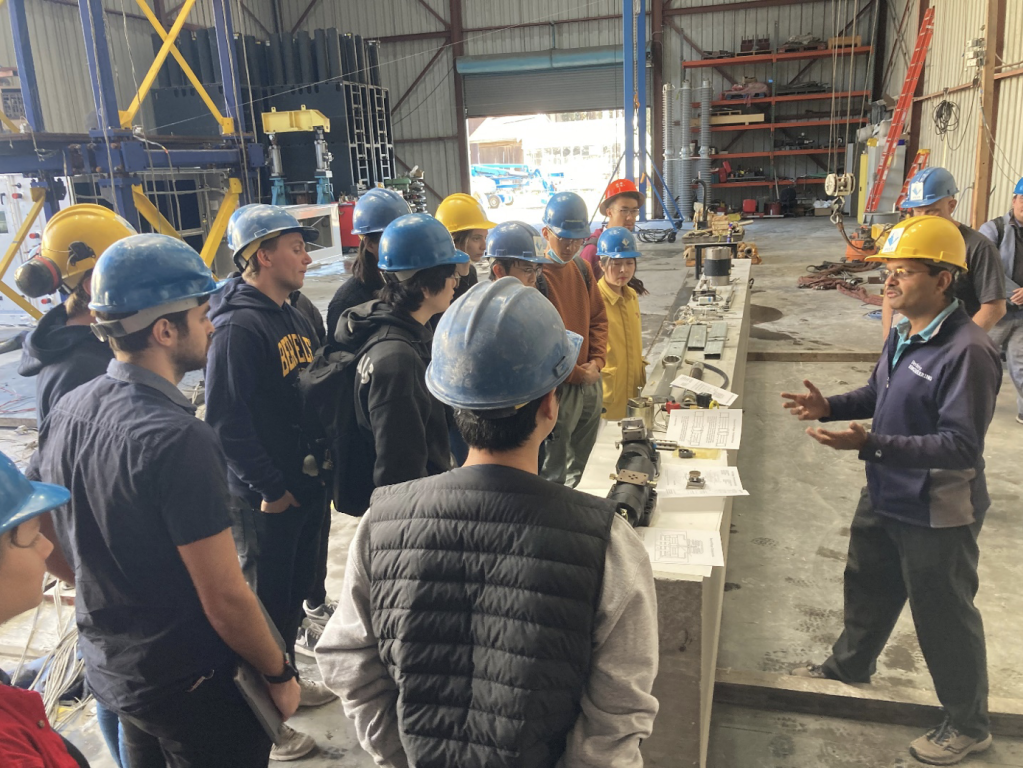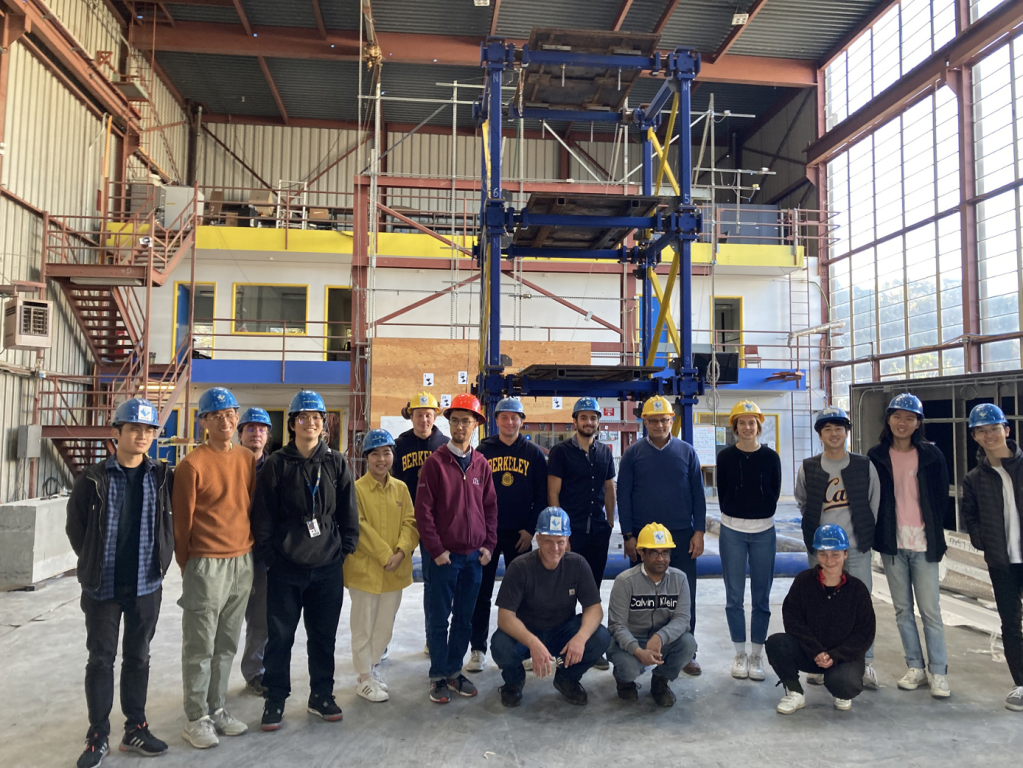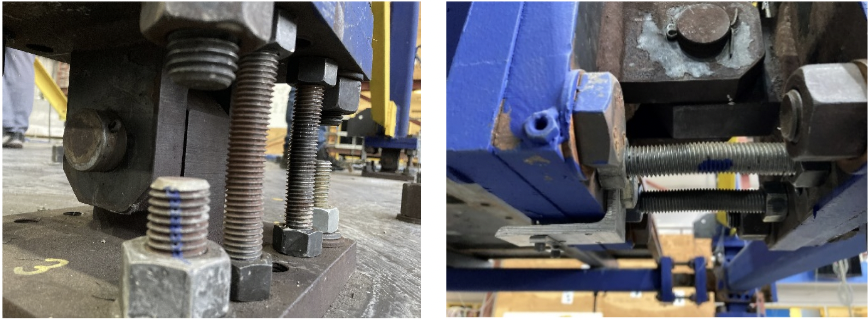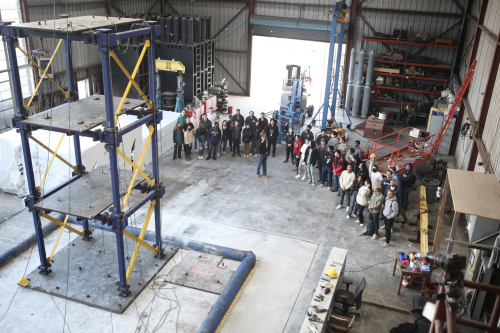By Khalid M. Mosalam
On Thursday, November 17, over 40 students from CE225 class (Dynamics of Structures) taught by Prof. Matthew DeJong, visited the UC Berkeley Shaking Table at Richmond Field Station (RFS). This table, which recently celebrated its 50th anniversary, is operated by the Pacific Earthquake Engineering Research Center (PEER) headquartered at UC Berkeley. At the time of the tour, there were two research projects and a commercial project in preparation, in addition to this educational activity.

Students toured two lab buildings consisting of 4-million pound press, reconfigurable reaction wall, large damper machine, single degree of freedom (DOF) shaking table, the pump house and the 6-DOF shaking table. A steel frame, called the Reconfigurable Platform for Earthquake Testing (REPEAT), consisting of clevis-coupon moment connectors specifically designed for research and educational purposes was used for demonstration. Students observed frequency characterization tests and earthquake tests on the 3-story configuration of this frame. They observed progressively increasing earthquake motions in the elastic range of the frame, reaching up to 100% of the El Centro earthquake.

On the following day, students from CE249 (Experimental Methods in Civil Engineering) taught by Prof. Khalid Mosalam, visited the facility. This course covers the design of structural models, instrumentation, testing and measurement techniques in greater detail. In addition to the tour of the lab buildings, students had a hands-on interaction with servo valves, actuators, load cells, displacement transducers, strain gauges and accelerometers. The same 3-story frame with a different clevis-coupon configuration was tested for earthquake motions in elastic and inelastic range, reaching up to 175% of Loma Prieta motion. Students observed the buckling of coupons in column and beam clevises.

“RFS has a unique experimental facility which helped researchers conduct pioneering research in the field for over five decades,” said Mosalam, Taisei Professor of Civil Engineering and Director of PEER. “It continues to do earthquake engineering research today and has a bright future ahead. It is important for the next generation of students from these courses to witness these large-scale experimental facilities.”

